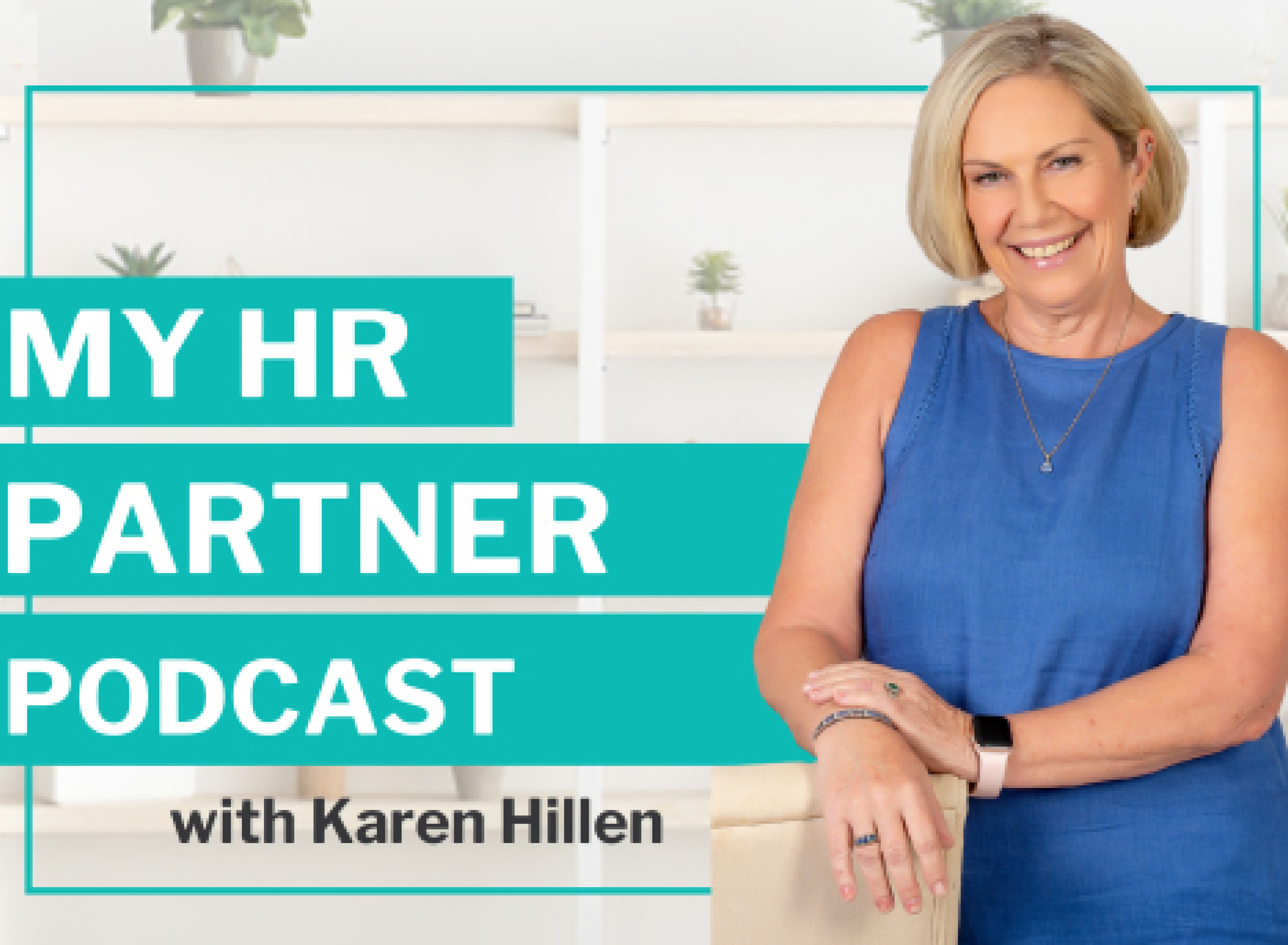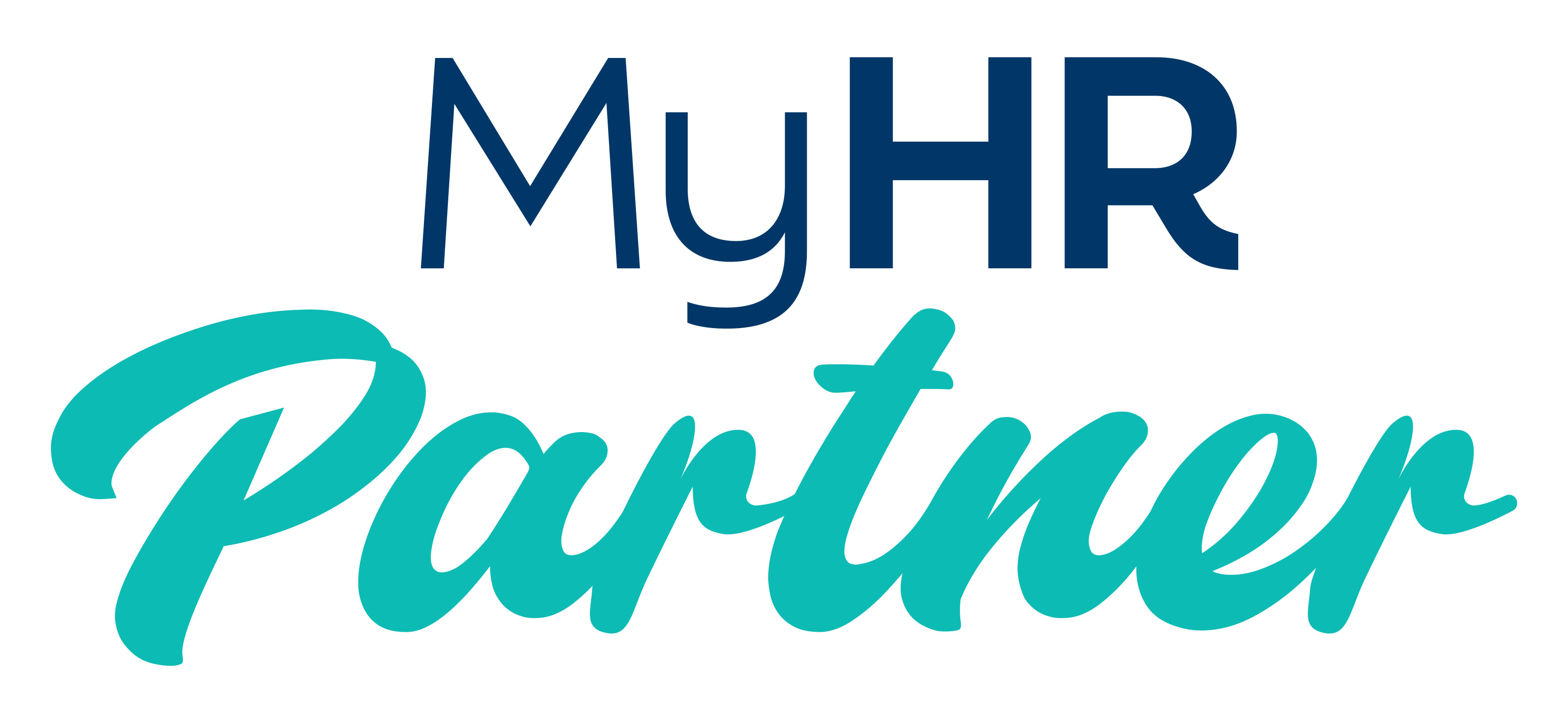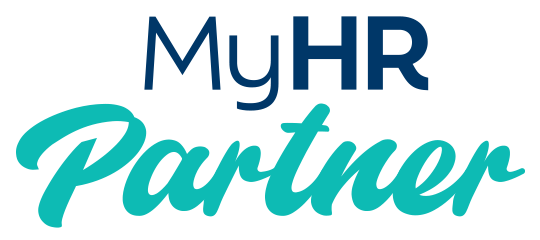Welcome to My HR Partner
Focus on running your business
We’ll handle the people side with care, clarity and confidence.
When you’ve got a great team, you’ve got something special. But managing their needs, HR compliance obligations and growth can quickly become a drain on your time, energy and focus. That’s where we step in. At My HR Partner, we help you feel confident in your people-management so you can attract and retain the right people, reduce the risk of costly HR mistakes, create a workplace where your team shows up ready to do their best — and you’re running your business instead of fighting fires.
You deserve an HR partner who gets it, who knows the rhythm of a business, values your time, and speaks your language (no HR-jargon, just plain English). With over 30 years of expertise in HR and a strong belief in kind, fair, productive workplaces, we bring both strategic clarity and genuine care.
Because when your people thrive, your business thrives — and you reclaim your focus.

Ready to reclaim your focus and build a people-powered business?
Book a free introductory call - let’s talk about what you’re aiming for, and how we can help you get there.
You’re not just buying a service
You’re gaining a partner who cares about your people, your growth, and doing HR the right way.
Let’s make it easier, together.
Welcome to My HR Partner
At My HR Partner, we understand that great employees are the cornerstone of a great business. That’s why we offer comprehensive HR services, tailored to empower your business with the tools and strategies needed for growth. We specialise in working with employee-focused professional service providers, managing those challenging HR issues that arise so you can focus on your core business activities with confidence.
We ensure that your HR policies, processes, & employment contracts are up-to-date and relevant to your business. By doing so, we help you maintain a workforce that is both competent and passionately engaged in your business vision.
At My HR Partner, we are committed to providing you with the HR support you need to thrive. Let us help you manage your most valuable asset – your people.
Karen Hillen is an experienced Human Resources specialist with over 30 years of expertise in the field. She curates the My HR Partner HR Hub which is a valuable resource for businesses covering various aspects of HR, including starting and ending employment, compliance, payroll, employee performance, WHS and more.
Her extensive experience in HR makes her a sought-after advisor and partner for businesses.


HR Advice
HR When you need it
Get expert guidance exactly when you need it: one-off, on the spot, tailored to your business. So you can stop guessing and start acting with confidence.
You can book in for a call when you need it.

HR Hub
Unlock HR Resources
Unlock 24/7 access to templates, checklists, masterclasses, & Q&A sessions. Save time. Stay ahead of changes. Build your HR foundation without reinventing the wheel.

HR Policies
Your Guide to HR Policies
Secure your business with clear policies built for your culture. Reduce risk, set expectations, and build a workplace where people know the game and play it well.

Employment Contracts
Get your contracts created for you
Secure your business with smart contracts built for your culture. Reduce risk, set expectations, and build a workplace where people know the game and play it well.

On Demand HR
Your Virtual HR Manager
Let us become your trusted HR teammate. The heavy lifting of policies, contracts, compliance and people strategy gets handled — you stay in charge of growth.

Free Resources & FAQs
Free Resources & What People Ask Us Most
We've got links to Modern Awards, Pay Guides and more.
We have also compiled answers to the most common queries to help you quickly find the information you need.
Our Latest Blog Post

Planning Employee Leave for the Year
Annual Leave Planning for the 2025 Christmas/New Year shutdown: A Guide for Australian Businesses
It’s just over 13 weeks until Christmas.
It's a good time to start planning for the Christmas/New Year period if you shutdown over that time. Determine the specific dates your business will be closed, and communicate this to your employees and clients.
Effective annual leave planning is important for a healthy and productive workplace.
As your trusted HR partner, we’ve put together a guide to help you manage annual leave proactively especially when planning for your Christmas/New Year shutdown.
Plan Ahead for the Christmas/New Year Shutdown:
If your business closes over the Christmas/ New Year period, you need to provide employees with the appropriate written notice as specified in their Award. You need to do this even if you have the information in an employment contract because you have to inform your employees of the dates each year.
It’s also wise to check if employees have enough leave to cover this period. If they don’t, you can explore options like agreeing in writing to take a period of unpaid leave or allowing them to take annual leave in advance. (Regularly checking leave balances when employees apply for leave throughout the year can be good too)
Just be sure to get a written agreement for any leave taken in advance (that puts an employee into a negative balance), outlining that they will repay the value if their employment ends before the leave is accrued. It's also important to understand that you can't force an employee to take unpaid leave, so making sure you come to a written agreement is important.
If you have an employee that is hired after the initial notice of the shutdown has been given to your team, you must give that employee notice as soon as reasonably possible (for example, it's a great idea to let them know as part of their induction, or even in the recruitment process).
Your employees are entitled to be paid for any public holidays during the shutdown period that fall on days they would normally work. This applies even if they have agreed to take a period of unpaid leave.
Why Strategic Leave Planning is Crucial for Your Business
A well-thought-out leave plan benefits both your business and your employees. Here’s why it’s essential:
Avoid Disruptions and Staffing Shortages: Last-minute leave requests can throw a spanner in the works. Planning ahead ensures you have adequate coverage, preventing disruptions to productivity and customer service.
Boost Employee Wellbeing: Regular breaks are vital for preventing burnout and keeping your team engaged and productive. Encouraging planned time off shows you value their wellbeing.
Ensure Compliance: As an employer in Australia, you have obligations under the National Employment Standards (NES) to provide annual leave. Proper planning helps you meet these requirements and ensures your payroll system accurately accrues leave entitlements.
Practical Strategies for Proactive Leave Management
Ready to take control of your leave planning? Here’s our best HR advice for 2025:
Create a Centralised Leave Calendar: A shared calendar, whether it’s a physical whiteboard or a digital tool, provides a clear overview of public holidays, peak periods, and approved leave. This helps employees choose dates that don't clash with critical business operations or when someone else is on leave.
Communicate Policies Early and Clearly: Your HR policy handbook should clearly outline leave policies, including notice periods, any restrictions during busy seasons, and the process for submitting leave requests. This transparency helps prevent misunderstandings and sets clear expectations.
Manage Peak Periods Effectively: Identify the busiest times of the year for your business and plan your staffing accordingly. For example, if you're in the retail sector, it’s best to avoid approving leave during peak holiday shopping seasons.
Be Fair and Consistent: Maintain a transparent and fair process for approving leave requests. Apply policies consistently to all employees to avoid any perception of favouritism. If your policy limits how many people can be on leave at one time, ensure it's applied fairly across the board.
Tools to Streamline Leave Management
You don’t have to manage leave manually. Here are some tools that can simplify the process:
HR and Rostering Software: Cloud-based HR and rostering systems are excellent for tracking and managing leave requests and entitlements automatically.
Spreadsheets: For smaller teams, a well-organised spreadsheet can be a simple and cost-effective way to track leave.
Whiteboard: A leave roster could be displayed in the office on a Whiteboard.
Automated Alerts: Many systems allow you to run regular reports and set up reminders for employees with high leave balances, encouraging them to book some time off.
A Quick Refresher on Annual Leave Entitlements in Australia
The National Employment Standards give details of what annual leave employees are entitled to:
Four weeks of paid annual leave per year for full-time employees.
Four weeks of paid annual leave (pro-rata) for part-time employees, based on their contracted hours.
Annual leave loading for employees covered by specific awards or enterprise agreements - your Award or Agreement will set out the entitlements.
It’s crucial to stay up-to-date with your Award conditions to ensure you remain compliant with all leave loading and Fair Work requirements.
Final Thoughts
Strategic leave planning is all about finding the right balance—ensuring your team gets the rest they need while keeping your business operating smoothly. By adopting these practices, you can create a win-win situation for both your employees and your bottom line.
If you’re struggling to manage leave or other HR challenges, My HR Partner is here to help. We specialise in simplifying people management for businesses across Australia, allowing you to focus on what you do best.
Need expert support with your HR? Contact us today to learn how we can tailor a solution for your business!
We provide HR advice and support. We have trusted partners to assist with any employment law issues
outside of our scope.
More info

Get HR Advice from our HR expert

HR Advice
HR When you need it
Karen’s advice is always tailored
to meet the unique needs and objectives of your business. Her ability to blend empathy with professionalism makes her an invaluable asset in helping you with your HR questions.
You can book in for a call when
you need it.

HR Hub
Unlock HR Resources
Join our exclusive community & gain access to resources, tools, & ongoing HR support.
You’ll have access to our invaluable resources 24/7 AND the opportunity to tap into support via our Q&A sessions, masterclasses & webinars.
Get up to date links to valuable HR information, Awards, Award
pay guides, compliance documents, templates, checklists, and info sheets.

HR Policies
Your Guide to HR Policies
Customised, up-to-date HR policies are crucial for your business. We help you develop & implement clear, effective HR policies that align with your values.
Our approach is designed to
a positive work environment &
minimise risks.

Employment Contracts
Get your contracts created for you
Secure your business and your people with professionally crafted HR contracts.
We provide thorough and compliant employment contract solutions tailored to your business needs.

On Demand HR
Your Virtual HR Manager
Customised, up-to-date HR policies are crucial for your business. We help you develop & implement clear, effective HR policies that align with your values.
Our approach is designed to
create a positive work environment
& minimise risks.

Podcast
Simplifying HR Management - One
episode at a time
Talking all things HR to help you make sure you are dotting the "i"s and crossing the "t"s ensuring you have everything in place to ensure a thriving business with happy employees.
Our Latest Blog Post

Planning Employee Leave for the Year
Annual Leave Planning for the 2025 Christmas/New Year shutdown: A Guide for Australian Businesses
It’s just over 13 weeks until Christmas.
It's a good time to start planning for the Christmas/New Year period if you shutdown over that time. Determine the specific dates your business will be closed, and communicate this to your employees and clients.
Effective annual leave planning is important for a healthy and productive workplace.
As your trusted HR partner, we’ve put together a guide to help you manage annual leave proactively especially when planning for your Christmas/New Year shutdown.
Plan Ahead for the Christmas/New Year Shutdown:
If your business closes over the Christmas/ New Year period, you need to provide employees with the appropriate written notice as specified in their Award. You need to do this even if you have the information in an employment contract because you have to inform your employees of the dates each year.
It’s also wise to check if employees have enough leave to cover this period. If they don’t, you can explore options like agreeing in writing to take a period of unpaid leave or allowing them to take annual leave in advance. (Regularly checking leave balances when employees apply for leave throughout the year can be good too)
Just be sure to get a written agreement for any leave taken in advance (that puts an employee into a negative balance), outlining that they will repay the value if their employment ends before the leave is accrued. It's also important to understand that you can't force an employee to take unpaid leave, so making sure you come to a written agreement is important.
If you have an employee that is hired after the initial notice of the shutdown has been given to your team, you must give that employee notice as soon as reasonably possible (for example, it's a great idea to let them know as part of their induction, or even in the recruitment process).
Your employees are entitled to be paid for any public holidays during the shutdown period that fall on days they would normally work. This applies even if they have agreed to take a period of unpaid leave.
Why Strategic Leave Planning is Crucial for Your Business
A well-thought-out leave plan benefits both your business and your employees. Here’s why it’s essential:
Avoid Disruptions and Staffing Shortages: Last-minute leave requests can throw a spanner in the works. Planning ahead ensures you have adequate coverage, preventing disruptions to productivity and customer service.
Boost Employee Wellbeing: Regular breaks are vital for preventing burnout and keeping your team engaged and productive. Encouraging planned time off shows you value their wellbeing.
Ensure Compliance: As an employer in Australia, you have obligations under the National Employment Standards (NES) to provide annual leave. Proper planning helps you meet these requirements and ensures your payroll system accurately accrues leave entitlements.
Practical Strategies for Proactive Leave Management
Ready to take control of your leave planning? Here’s our best HR advice for 2025:
Create a Centralised Leave Calendar: A shared calendar, whether it’s a physical whiteboard or a digital tool, provides a clear overview of public holidays, peak periods, and approved leave. This helps employees choose dates that don't clash with critical business operations or when someone else is on leave.
Communicate Policies Early and Clearly: Your HR policy handbook should clearly outline leave policies, including notice periods, any restrictions during busy seasons, and the process for submitting leave requests. This transparency helps prevent misunderstandings and sets clear expectations.
Manage Peak Periods Effectively: Identify the busiest times of the year for your business and plan your staffing accordingly. For example, if you're in the retail sector, it’s best to avoid approving leave during peak holiday shopping seasons.
Be Fair and Consistent: Maintain a transparent and fair process for approving leave requests. Apply policies consistently to all employees to avoid any perception of favouritism. If your policy limits how many people can be on leave at one time, ensure it's applied fairly across the board.
Tools to Streamline Leave Management
You don’t have to manage leave manually. Here are some tools that can simplify the process:
HR and Rostering Software: Cloud-based HR and rostering systems are excellent for tracking and managing leave requests and entitlements automatically.
Spreadsheets: For smaller teams, a well-organised spreadsheet can be a simple and cost-effective way to track leave.
Whiteboard: A leave roster could be displayed in the office on a Whiteboard.
Automated Alerts: Many systems allow you to run regular reports and set up reminders for employees with high leave balances, encouraging them to book some time off.
A Quick Refresher on Annual Leave Entitlements in Australia
The National Employment Standards give details of what annual leave employees are entitled to:
Four weeks of paid annual leave per year for full-time employees.
Four weeks of paid annual leave (pro-rata) for part-time employees, based on their contracted hours.
Annual leave loading for employees covered by specific awards or enterprise agreements - your Award or Agreement will set out the entitlements.
It’s crucial to stay up-to-date with your Award conditions to ensure you remain compliant with all leave loading and Fair Work requirements.
Final Thoughts
Strategic leave planning is all about finding the right balance—ensuring your team gets the rest they need while keeping your business operating smoothly. By adopting these practices, you can create a win-win situation for both your employees and your bottom line.
If you’re struggling to manage leave or other HR challenges, My HR Partner is here to help. We specialise in simplifying people management for businesses across Australia, allowing you to focus on what you do best.
Need expert support with your HR? Contact us today to learn how we can tailor a solution for your business!
We provide HR advice and support.
We have trusted partners to assist with
any employment law issues outside
of our scope.
More info
PO Box 1079
Coolangatta QLD 4225
ABN 30 644 527 015
Get HR Advice from our HR expert








